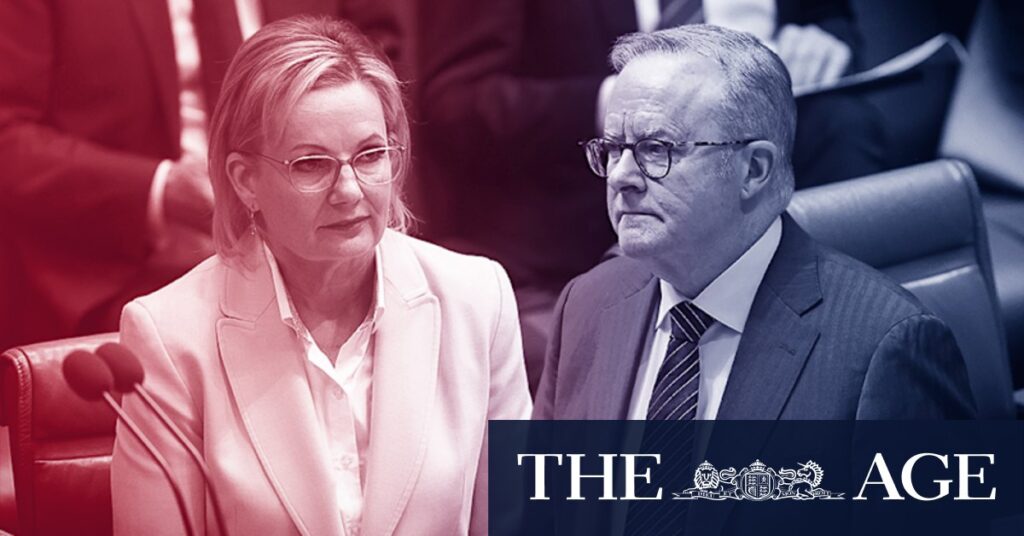
Australians have significantly reduced their approval of Sussan Ley’s performance following a tumultuous month marked by Liberal Party instability, leaks, resignations, and sackings. These findings are poised to increase pressure on the opposition leader and fuel speculation about her political future.
Only 33 percent of voters rated Ley’s performance as either good or very good, marking a sharp decline of 8 percent in just one month. Meanwhile, 38 percent rated her performance as poor or very poor, up from 32 percent last month. This results in a net rating of minus 5 for Ley, a dramatic drop from plus 9 last month, representing a 14 percentage-point decline well beyond the margin of error.
Prime Minister Anthony Albanese also saw a decline in his performance ratings, with 41 percent of voters considering his performance good or very good, down from 44 percent last month. Conversely, 47 percent rated it as bad or very bad, up from 45 percent. This reflects a net drop of five percentage points and a net rating of minus 6, also outside the margin of error.
Liberal Party in Disarray
The massive drop in support for Ley is likely to be leveraged by her factional opponents as further evidence that she may not be the right leader for the Liberals following their sweeping defeat in the May election. Conversely, Ley’s allies argue that her personal approval ratings, which have been stronger than the party’s two-party preferred and primary votes, have suffered due to internal disunity and destabilization within the Coalition ranks.
Labor continues to hold a commanding and unchanged 10 percentage point lead in the two-party preferred vote at 55-45, based on the preferences of those surveyed. This mirrors the margin from the national vote in May when Anthony Albanese won a landslide victory, albeit a drop from the 59-41 post-victory glow recorded in August.
Labor’s primary vote fell from 35 percent to 34 percent over the past month, a movement within the margin of error, while the Coalition’s vote rose by one percentage point from 27 to 28 percent.
Internal Challenges and Policy Disputes
The survey, conducted by Resolve Strategic from October 7 to 12 with 1800 participants, has a margin of error of 2.3 percent. Resolve pollster Jim Reed commented on Ley’s declining approval ratings, noting, “It’s one of the ironies of politics that leaders do not control unity but they suffer most from disunity. Voters are telling us they don’t know who will be leader next year, let alone what their policies are.”
In recent developments, Ley dismissed Jacinta Nampijinpa Price last month for disloyalty and offensive comments about Indian immigration to Australia. Ley is also expected to finalize a second mini-reshuffle following the resignation of shadow home affairs spokesman Andrew Hastie from the frontbench.
58 percent of voters expressed a desire to see immigration intake reduced, with 27 percent unsure and only 15 percent opposing the reduction.
On immigration, respondents were informed of Australia’s current net migration of 316,000 people and a permanent intake of 185,000 annually, with the Coalition advocating for cuts. Support for a reduction was widespread across political lines, including 57 percent of Labor voters and 65 percent of Coalition voters.
Future Directions for the Coalition
With the Coalition’s factions divided on issues like immigration and net zero, voters were also split on whether the opposition should move ideologically toward the center or further to the right. Overall, 25 percent of voters favored a more right-wing approach, while 32 percent preferred a centrist shift, aligning with Ley’s moderate stance.
Among Coalition voters, opinions were similarly divided, with 32 percent supporting a more conservative approach and 33 percent advocating for a centrist position. Meanwhile, One Nation’s vote, which increased by 3 percentage points last month, remained steady at 12 percent, indicating the party continues to draw voters from the Coalition.
The Greens’ primary vote held at 11 percent, while support for “other” parties, including independents and smaller parties, remained high at 38 percent. This trend highlights a growing movement away from the two major parties, a pattern that has persisted for decades.
As the political landscape continues to evolve, the Liberal Party faces critical decisions about its leadership and policy direction. The coming months will be pivotal in determining whether Sussan Ley can stabilize her position and guide the party through its current challenges.







